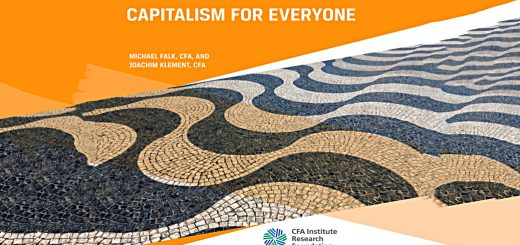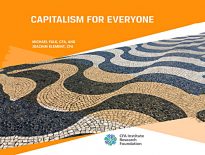Valuing Human Capital

Today’s post is about valuing human capital – the ability of an individual to produce a future income.
Contents
The young are already rich
These days, there’s a lot of intergenerational tension about money – much more than in previous decades.
A few things have changed since I was part of the younger generation which help to explain why:
- Houses are more expensive (in capital terms – low interest rates mean that they are quite affordable if you can borrow the money in the first place), though good houses haven’t been cheap since after the war
- Borrowing money is easier than it used to be (higher income multiples), though, in a crowded island with ever-smaller households, there will always be some people who are missing out
- There are more dual-income families than before, putting singletons at a disadvantage
Something that doesn’t get enough attention in this debate is human capital.
- Young people have a far greater potential to earn money into the future than do old people.
This means that it’s a good idea to convert this potential into actual savings each year.
- And this tendency, along with compounding returns, means that old people will tend to be richer than young people.
I’ll return to the philosophical side of this situation in a later post, but today I want to look at how we might put a number on human capital.
- How can we add human capital to the balance sheet?
The motivation for this post comes from my 2020 survey of my own 36 years of earning and saving.
- There ought to be a version of that article which takes into account the depletion of my human capital.
Accounting
Let’s start with what company accounts have to say about human capital – which is not much.
The very definition of human capital recognises that is an intangible asset that is not shown on the balance sheet.
- It can be seen as the (unmeasured) economic value of a worker’s experience and skills – education, training, intelligence and even health.
But current accounting practices class investment in staff as a cost, with no added value in the accounts.
- There’s no balance sheet item to reflect productivity, perhaps because staff – unlike plant and machinery – walk out of the door every evening and can change companies when they feel like it.
This is part of the reason why so many currently successful (tech) companies have light balance sheets and helps to explain why traditional measures of value like price to book no longer work.
Some firms calculate an ROI on the development of human capital, by dividing the increase in profit from one year to the next by the investment in skills and training.
- Which is not the same as measuring the actual value of the human capital.
So there’s no accounting number that we can easily use to solve our problem.
- All we have is the cashflows, but that should be enough.
Capitalising Human Capital
With the corporate world seemingly unable to help, I think we have to fall back on the approach we took when trying to value the State Pension (and DB pensions in general).
- We have a future income stream, which we can capitalise into a present value.
We’ll need to make some assumptions about how long the income stream will continue (when we plan to retire) and whether it will increase or remain constant in real terms (or more likely, peak around age 50 and then start to decline.
- But it should be possible to come up with a number that would allow a (non-retired) investor to work out whether they were converting their human capital into an equivalent amount of actual capital.
In other words, whether they were really getting richer or not.
This value might also be used in the asset allocation process, although the complication here is that the temptation to value the annuity-like stream of payments as a bond portfolio is wrong.
- Unlike a pension, earned income is not guaranteed.
In fact, the same logic can be applied to the capitalisation rule itself.
- You might want to add a secondary discount factor to account for the fact that you could not receive all the income you expect (though of course, you might alternatively end up getting more).
Potential valuation methods
When we looked at the State Pension, I came up with seven valuation methods:
- Discount the annual payments, up to my life expectancy (a sort of cash basis).
- Yield basis – how much would I need to hold in bonds to generate that income.
- The same, but with the FTSE All-Share rather than bonds.
- A similar approach, but using the Safe Withdrawal Rate as the measuring stick.
- As an annuity, with the 10-year Gilt yield as the discount rate.
- As a reverse annuity, using the current annuity rate as a discount rate.
- Using the Government’s “20 times” rule for DB pensions.
If we were to vary the level of income from year to year, applying some of these methods would be tricky, but let’s keep things simple for now.
- In the end, I ruled out using bond yields as they were so low at the time that this method gave a very high valuation.
Bond yields have since risen and they are back in my calculations.
Discounting
Applying this approach would require a lot of detailed calculations each year, and since I’m already retired, I’m not motivated just now to retrofit this approach to my own life story. (( No doubt I will get around to it at some point ))
To get a feel for how things work, we need a standardised unit of capitalisation, based around £x pa over y years.
- Let’s say £10K of income over 10 years – £100K in total
The simplest approach is just to discount these payments back to today, using say Gilt yields.
- So the first 10 years might be worth £96K, and the next 10 years £88K, and the third decade only £80K.
Let’s see how this compares to the complicated method.
My current state pension entitlement is £8,140.
- Payments begin in 7 years and should last on average for 20 years.
The future start date leads to an average discount factor of 13.6%.
- So we can think of my pension as payments of £7,033 starting today and lasting 20 years.
The December 2019 capitalised value of this pension was £185K.
The new method gives £67K for the first 10 years and £62K for the second decade.
- This total of £129K is much more conservative than the multiple methods used as part of the asset allocation process in retirement.
Much of the difference reflects longevity insurance built into some of the pension valuation methods.
- We don’t know when we will die, and pension payments will continue until we do.
In contrast, our future salary end at our retirement date.
- So we probably want to be conservative when looking at future income streams out as far as 40 years into the future.
Results
Let’s start with someone 40 years from retirement, on an average £25K salary.
- That’s 240 + 220 + 200 + 180 = £840K.
Probably more than you thought.
- Of course, we have to account for tax, which reduces a £25K gross salary to £20.5K.
So we might prefer to use £689K – still a lot of money.
How about someone on £50K, with 30 years to go?
- That’s 480 + 440+ 400 = £1.32M.
After tax, that works out to a nice round £1M.
And finally, how about someone on £100K with 20 years to go?
- That’s 960 + 880 = £1.84M.
After tax, it’s worth £1.22M.
Conclusions
For all the fashionable HR talk of human capital, converting it into a dollar value does not seem to be a priority for these professionals.
- I had hoped to adapt the methods I used previously to capitalise pensions, but I forgot about the built-in longevity insurance.
Luckily we can use simple discounting to come up with ballpark figures for basic scenarios.
- The good news is that this method will be much easier to retrofit to my own career numbers – I just need to look up historical Gilt yields.
All of the valuation numbers we came up with are big ones, and worth thinking about the next time you worry about intergenerational inequality.
- Until next time.
















Milevsky’s book is a bit of a classic on this subject, see e.g.:
https://www.amazon.co.uk/Are-You-Stock-Bond-Financial/dp/0133115291
and given that most folks are bonds this is the real reason why young folks should hold mostly stocks according to Zvi Bodie, see e.g.: https://papers.ssrn.com/sol3/papers.cfm?abstract_id=5771